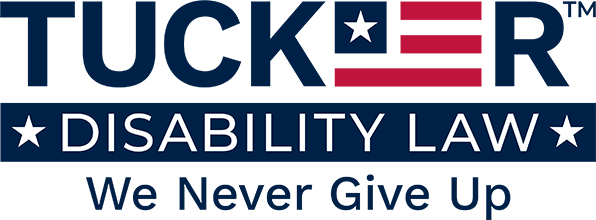Here’s something terrifying: Your doctor believes you’re disabled. You know you can’t work. But the insurance company’s AI just scanned your disability claim medical records and decided you’re fine – all because your doctor wrote “patient reports back pain” instead of “patient cannot stand for more than 15 minutes without severe pain requiring rest.”
Welcome to the frustrating new reality of disability claims in 2025. It’s not enough anymore to just be genuinely disabled – your disability claim medical records need to speak the language that insurance AI understands. At Tucker Disability Law, we’re seeing more and more claims denied not because people aren’t disabled, but because their medical records don’t contain the right words and phrases that AI systems are programmed to recognize.
Let’s talk about how to fix that.
What Insurance AI Is Actually Looking For in Your Disability Claim Medical Records
When insurance companies use artificial intelligence to review disability claims, their programs are scanning your medical records for specific types of information. According to recent industry reports, these AI systems focus on extracting key data points like impairments, functional limitations, and how those limitations align with your policy’s definition of disability.
Here’s what’s wild: the AI isn’t reading your records the way a human doctor would. It’s looking for particular keywords, phrases, and patterns. Miss those patterns, and the computer might decide you’re not disabled – even if a human reviewing the same file would clearly see that you are.
The system works like this: AI scans thousands of pages of medical records in minutes, pulling out specific information and comparing it to what the insurance policy requires. It’s looking for concrete, measurable limitations. Vague statements don’t register.
The Words That Trigger AI Red Flags vs. Green Lights in Disability Claim Medical Records
Not all medical documentation is created equal in the eyes of AI. Some phrases help your claim; others hurt it without you even knowing.
Red Flag Phrases (These Can Hurt Your Claim):
“Patient reports pain” – This sounds like you’re just complaining, not that you have an objective medical problem
“Seems to be improving” – Even if you’re still severely disabled, this phrase suggests you’re getting better
“No acute distress” – Doctors use this for patients who aren’t actively dying, but AI reads it as “this person is fine”
“Patient declines further testing” – AI may interpret this as you not taking your condition seriously
“Appears comfortable” – Even if you’re in significant pain but just not crying, this phrase can be used against you
Green Light Phrases (These Support Your Claim):
“Cannot stand for more than 15 minutes without requiring rest” – This is specific and measurable
“Unable to lift more than 5 pounds due to documented shoulder impingement” – Shows both the limitation and the medical reason
“Demonstrates visible difficulty rising from seated position” – Objective observation by the doctor
“Requires frequent unscheduled breaks during examination due to fatigue” – Documents that your condition affects sustained activity
“Reports severe pain rated 8/10 despite maximum medical therapy” – Shows both symptom severity and that treatment isn’t working
See the difference? The second set of phrases is specific, measurable, and documents actual functional limitations. That’s the language AI understands.
How Your Doctor Can Help Create Better AI Disability Claim Medical Records
Most doctors have no idea their notes are being scanned by computers. They’re just documenting what they see. But you can help them help you by giving them better information during your appointments.
Instead of saying: “I’m in a lot of pain and can’t do my job.”
Try saying: “I can only stand for about 10-15 minutes before I need to sit down. At work, I have to be on my feet for 4-hour stretches, and I physically cannot do that anymore. Even grocery shopping, I have to stop and rest multiple times.”
Instead of saying: “My brain fog is really bad.”
Try saying: “I lose my train of thought mid-sentence at least 10 times a day. Last week, I forgot I was cooking and left the stove on. I can’t follow complex instructions anymore – I have to read emails 3-4 times to understand them.”
The more specific you are about what you can’t do and how often, the more likely your doctor will document those exact limitations in your medical records. And those are the details AI is programmed to extract and evaluate.
The Documentation Mistakes AI Loves to Exploit
Certain common mistakes in medical documentation are like catnip for AI denial systems. These programs are specifically designed to catch these issues and flag claims:
Inconsistent Descriptions
If your primary care doctor’s notes say you can walk a mile, but your specialist says you can only walk one block, the AI will flag this as a major inconsistency. Even if both are true (you had a good day vs. a bad day), the computer sees it as contradictory information and may recommend denial.
Gaps in Treatment
Miss a few doctor’s appointments? AI reads that as “condition must not be that serious.” Even if you couldn’t make it to appointments because of your disability, or because you couldn’t afford the copay, the computer doesn’t understand context.
Missing Functional Information
Your doctor might document your diagnosis perfectly – all the right test results, imaging, lab work. But if they don’t document how that diagnosis affects what you can and can’t do on a daily basis, AI won’t make that connection. The program needs someone to connect the dots between “herniated disc at L4-L5” and “cannot sit for more than 30 minutes.”
Vague Time References
“Patient has been experiencing symptoms for a while” is useless to AI. “Patient has experienced daily symptoms for 14 months with no improvement despite treatment” is specific and documentable.
Working With Your Healthcare Team to Improve Your Medical Records
You need your doctors to document your limitations in a way that both humans and computers will understand. Here’s how to make that happen:
Before Your Appointment:
Write down specific examples of what you cannot do. Don’t just say “I can’t work” – list the actual tasks that are impossible: “I cannot type for more than 10 minutes without severe hand cramping” or “I cannot concentrate long enough to complete a single work report.”
Track your symptoms daily. When did they occur? How long did they last? What triggered them? What made them better or worse? This concrete data helps your doctor write more specific notes.
Bring a list of all medications and their side effects. If your medication makes you drowsy for 4 hours after taking it, that’s a functional limitation that needs to be documented.
During Your Appointment:
Be brutally honest about your worst days, not just your average days. AI tends to assume your best day is your everyday capability.
Ask your doctor to document specific limitations: “Could you note in my chart that I can only stand for 10 minutes at a time?” Most doctors are happy to do this if you ask.
Request that your doctor document objective findings – things they can see, not just what you report. If you’re visibly struggling to get on the exam table, ask them to note that.
After Your Appointment:
Request copies of your medical records regularly. Review them for accuracy and completeness. If something important is missing, contact your doctor’s office.
If you see vague language like “doing okay” or “no significant changes,” consider writing a patient statement for the record clarifying what “okay” actually means for you (still in daily pain, still unable to work, etc.).
The Specific Language for Different Conditions
Different types of disabilities need different documentation approaches. Here’s what AI looks for in various common conditions:
For Pain Conditions (Back Pain, Fibromyalgia, Arthritis):
Document pain levels at different times of day and with different activities. Include information about how long you can do activities before pain forces you to stop. Note what doesn’t work – “pain remains 7/10 despite maximum dose of prescribed medication.”
For Mental Health Conditions (Depression, Anxiety, PTSD):
Specific examples of cognitive limitations are crucial. Document how many times you lose focus during a conversation, how long it takes you to complete simple tasks, and how your condition affects your ability to interact with others or handle stress.
For Chronic Fatigue Conditions (ME/CFS, Long COVID, MS):
Post-exertional malaise needs to be clearly documented. After activity, how long does it take to recover? How much activity triggers a crash? What percentage of your day can you actually be active vs. needing rest?
For Episodic Conditions (Migraines, Seizures, Panic Attacks):
Frequency is key. How many episodes per week or month? How long do they last? What is your recovery time? How unpredictable are they? AI needs to see that even if you’re fine right now, you cannot reliably work full-time.
What To Do If AI Already Misread Your Disability Claim Medical Records
Already got denied and suspect AI misread your medical records? Here’s your action plan:
Request Your Complete Claim File
You have the legal right to see everything the insurance company has, including any AI analysis or risk scores. Ask specifically if AI was used in your claim review and request documentation of that analysis.
Demand Human Review
If AI was involved in your denial, you can specifically request that a qualified medical professional review your claim without relying on the computer’s analysis. Under California’s new SB-1120 law (effective January 2025), only licensed physicians can deny claims for medical necessity reasons.
Submit Corrective Documentation
Work with your doctors to create new medical source statements that specifically address the gaps the AI identified. Use clear, specific language about your functional limitations.
Get Expert Help
The insurance companies are spending millions developing sophisticated AI to deny claims. You need someone on your side who understands how these systems work and knows how to fight back with the right documentation strategy.
The Bottom Line on AI Disability Claim Medical Records
It’s not fair that you have to worry about whether a computer will understand your disability. But until regulations catch up with technology, understanding how AI reads disability claim medical records is your best defense.
The key takeaway? Vague statements don’t work anymore. Every limitation needs to be specific, measurable, and clearly documented in your medical records. Your doctors need to connect the dots between your diagnosis and what you actually can’t do in daily life.
At Tucker Disability Law, we stay current on how insurance companies use AI technology so we can help our clients build stronger claims from the start. We know what language works, what documentation AI is looking for, and how to present your case so that both computer systems and human reviewers see what we see: that you’re genuinely disabled and deserve benefits.
Think your medical records aren’t telling the full story? Worried that AI might misinterpret your condition? We speak both human and computer, and we know how to translate your disability into language that gets results.
Contact Tucker Disability Law today. We never give up – and we won’t let a computer algorithm stand between you and the benefits you’ve earned.
Use the blue contact section NOW to call us, live chat with us, or message us using our confidential contact form.







